The African Safari’s Big Five: The Five Animals You Are Likely to See
The Big Five are safari royalty. Any game drive you go on will talk about the Big Five and you are likely to see all five of them on a safari tour. Originally named by game hunters who recognized the Big Five as the most dangerous and difficult animals to hunt in Africa, now they are the most sought after animals to see on safari.
Get to know the Big Five to learn how you can spot them all on your African safari.
Elephant
The African elephant is the largest land animal in the world. Full grown adults can reach up to 3 meters in height, and weigh over 10 tons. Elephants are found throughout the grassy savannahs of eastern and Southern Africa, as well as the dense rainforests of western and central Africa. Elephants are highly social animals and herds can number more than 100 individuals. Don’t be surprised, though, if you do spot a solo elephant. Herds are matriarchal, and female calves will stay with the herd for life, but males will split off to travel solo or create bachelor groups before finding a herd of their own.
The best place for spotting herds of elephants is Chobe National Park in Botswana. Elephant spotting is most impressive in the dry season, when elephants congregate by the hundreds at the Chobe riverfront to get water and cool off. Remember that the elephants you see on safari are wild animals and deserve the respect you would give to any animal on their own territory. If you want to interact with elephants in an up-close way, there are some ethical elephant orphanages that you can visit to see how dedicated keepers care for young elephant orphans.
Lion
King of the jungle and king of the savannah, the lion is the world’s second largest cat, after the tiger. Lions tend to roam in prides of about twelve. Contrary to popular belief, females do most of the hunting, while males will defend the pride’s territory. Lions natural prey includes antelopes, zebras, buffalo, and even giraffes. While lions have few natural predators, buffalo have been known to attack a lion that has killed one of their herd out of revenge.
Lions live throughout Africa, and you can spot them in any of the major safari parks. The largest lion population in Africa is in Tanzania, so parks like Serengeti National Park are the perfect place to catch the big cats. To interact with lions safely, make sure you book a tour with a reputable company that runs responsible tours through the game reserves and national parks.
Leopard
The most elusive of the Big Five, leopards hunt and live alone and are exclusively nocturnal. Each individual leopard occupies a famously large territory. Farmlands and cities have encroached on these territories, which has landed leopards on endangered animals lists as Vulnerable.
If you are looking for a leopard, the best time is early morning or late at night when they will be stirring. When looking for a leopard during the day, check the tree cover. Leopards are great climbers and will even carry their kills up into trees to store them for days. Leopards live throughout sub-Saharan Africa and are actually one of the only Big Five animals found outside national parks and game reserves.
Buffalo
African buffalo, known as Cape buffalo, are not to be confused with water buffalo, the domesticated working buffalo found throughout Asia. The Cape buffalo has never been domesticated, and is one of the most dangerous and territorial animals in the Big Five.
Cape buffalo live in large herds, grazing the savannah and floodplains. Fiercely protective and even aggressive, male buffalo can weigh up to 2,000 pounds and will attack with their deadly fused horns at the slightest provocation. Groups of buffalo will protect their young and sick, and can even attack and kill a lion if it has threatened the herd.
Cape buffalo are most often found close to water. The Masai Mara is a great place to spot herds of buffalo as the long grasses found along the banks of the Mara River are buffalo’s perfect feeding ground. The vast open plains of the Mara show the classic safari image of a herd of black buffalo traveling across the savannah.
Rhino
The most endangered of the Big Five, seeing a rhino is a rare and thrilling experience. There are two species of rhino in Africa, the black rhino and the white rhino. White rhinos actually get their name not from their color, but from the Dutch word “weid” which means wide. The white rhino has a wide mouth, while the black rhino has a smaller, more pointed mouth. The black rhino is one of the most highly poached animals in the world, with only 5,000 animals left in the wild. The remaining black rhino populations are heavily guarded by anti-poaching officers.
While white rhinos are found more broadly around East and South Africa, black rhinos are patchily distributed in a few parks in Namibia, South Africa, and Kenya. One of the best places to see both black and white rhinos is Kruger National Park in South Africa, where the large expanse of the park hosts thousands of rhinos, upping your chance of seeing one.


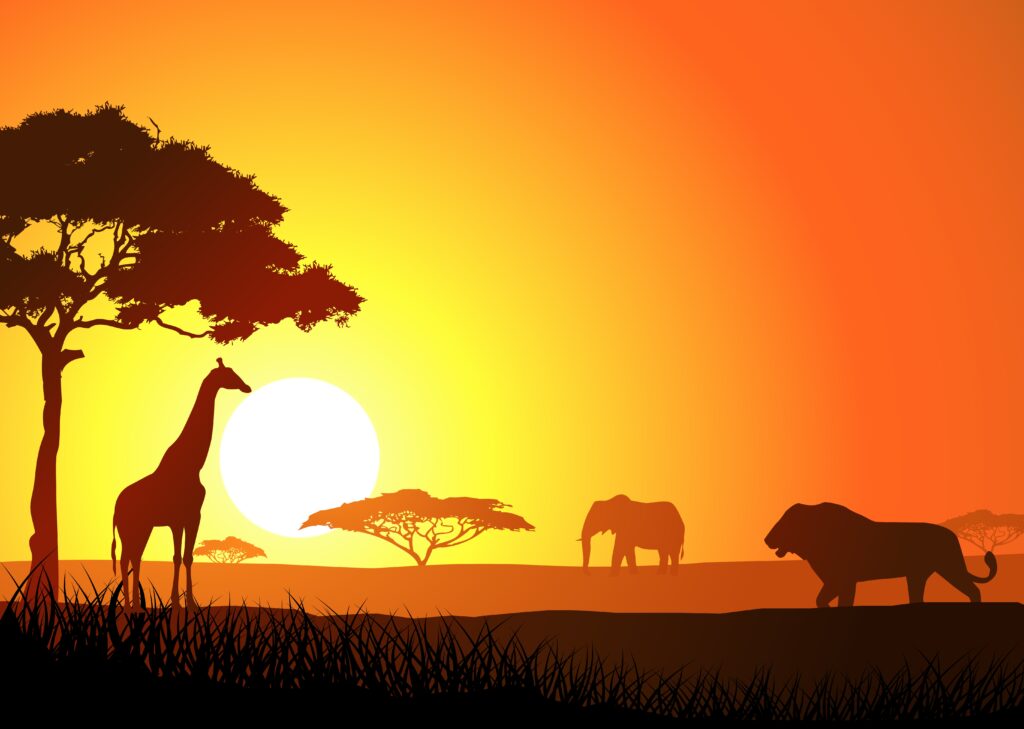
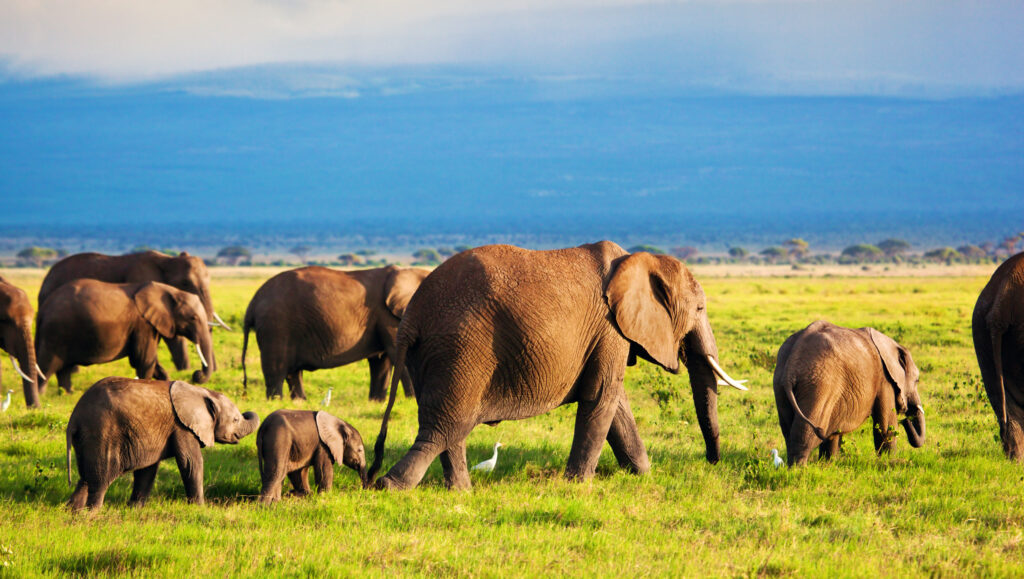
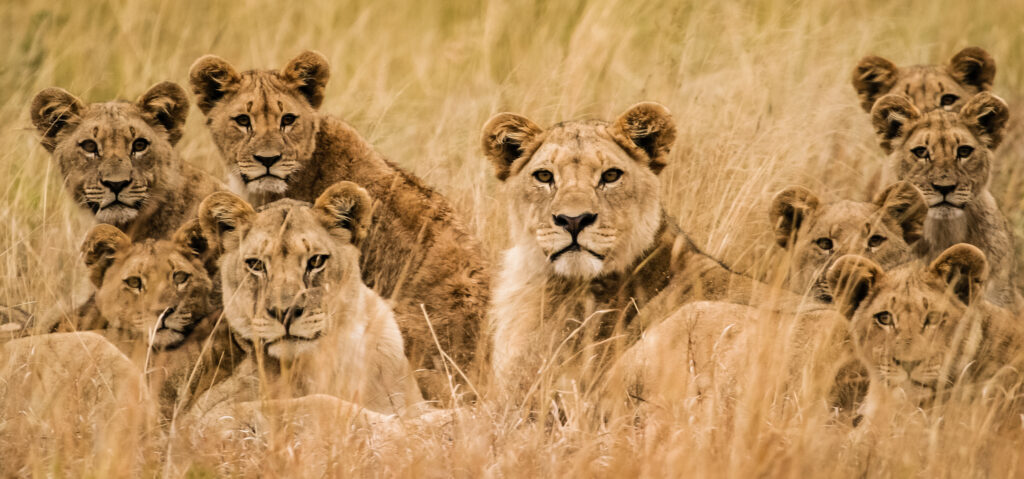
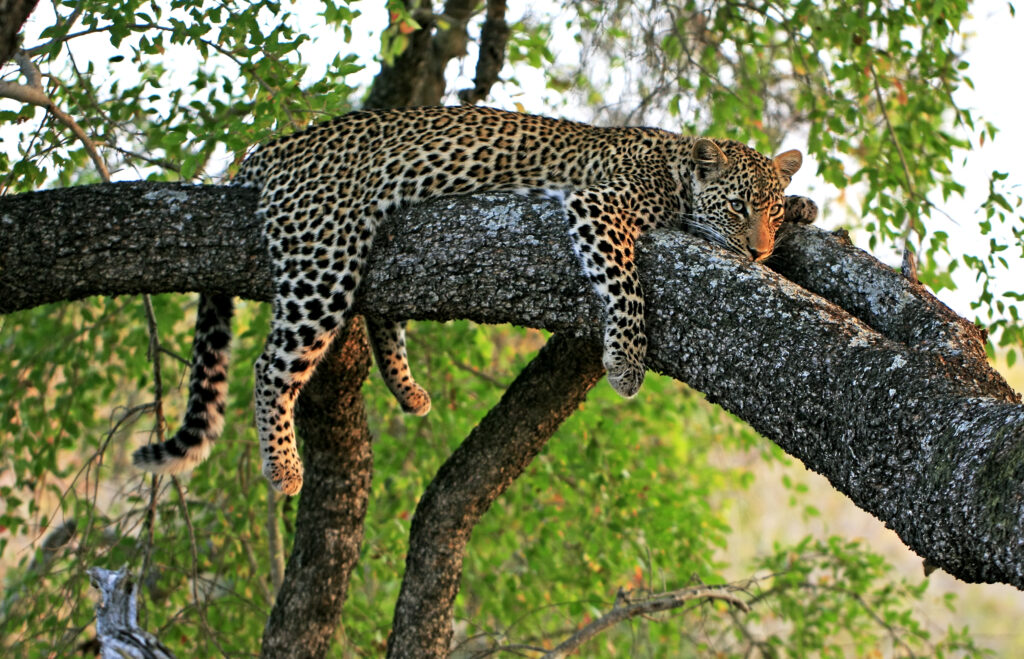
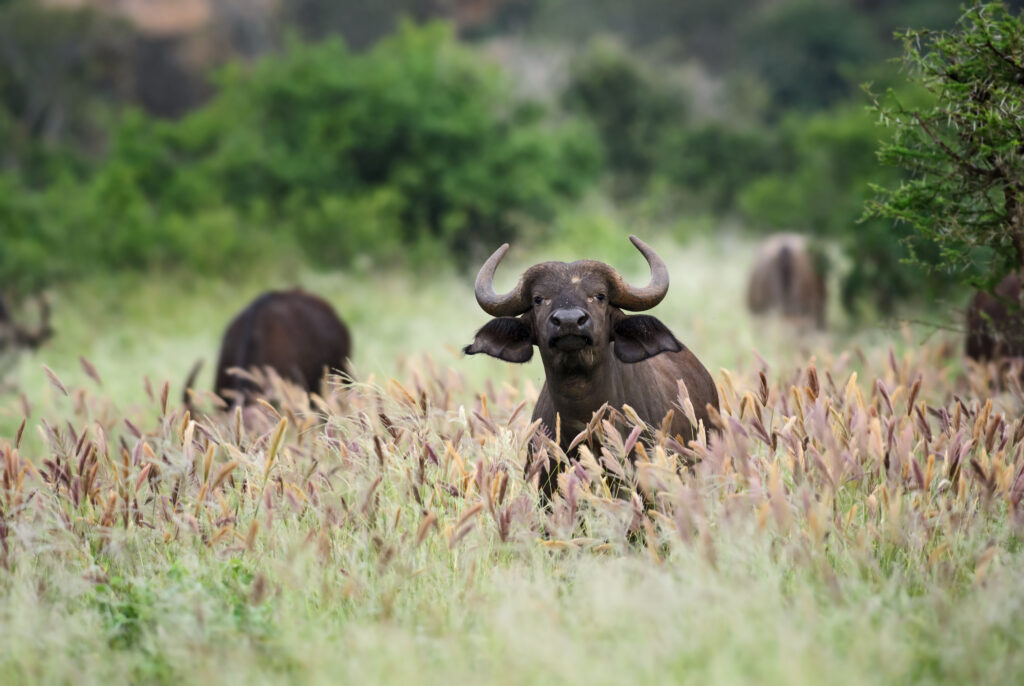
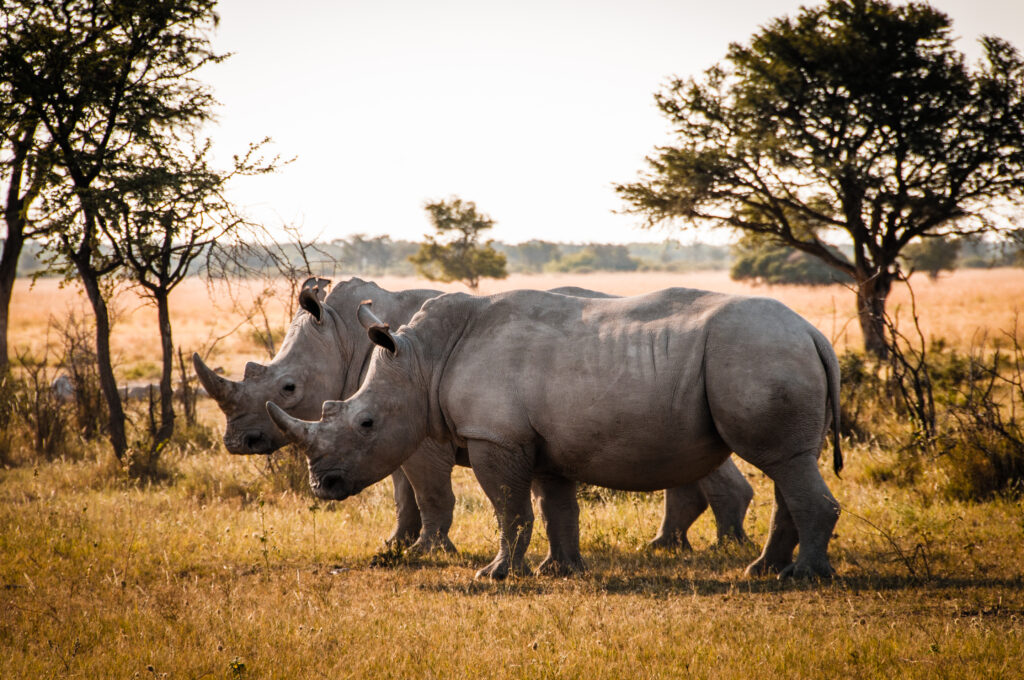
Leave a Reply